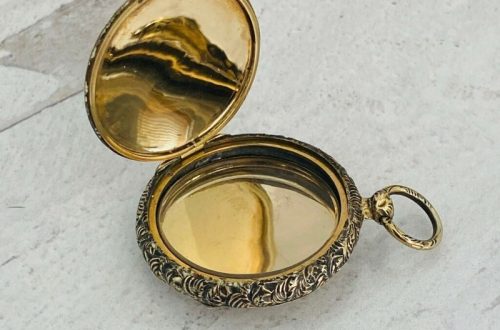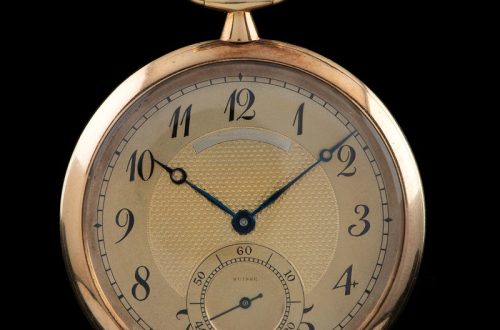The world of watches boasts a dazzling array of timepieces, but the mechanical chronograph stands out as a captivating blend of elegance and functionality. More than just a wristwatch, it’s a miniature marvel of engineering, offering the ability to measure elapsed time with captivating precision. This article delves into the timeless elegance of mechanical chronographs, exploring their rich history, intricate mechanics, and the enduring allure they hold for watch enthusiasts and collectors alike.

Part 1: A Legacy of Precision: The Evolution of the Chronograph
1. From Horse Racing to the Wrist: The Early Chronographs
The origins of the chronograph can be traced back to the late 18th century, when watchmakers sought to create a timepiece capable of accurately timing horse races. These early examples were large and cumbersome, typically pocket watches with a single push-button to start and stop the timing function. As watchmaking techniques evolved throughout the 19th century, chronographs became more compact and sophisticated, paving the way for their transition to wristwatches in the early 20th century.
2. Beyond Basic Timing: The Rise of Specialized Functions
The early 20th century witnessed a significant advancement in chronograph functionalities. Professions like aviation and the military demanded more specialized tools for timekeeping. Watchmakers responded by incorporating features like telemeters for measuring distance and tachymeters for calculating speed. These innovations transformed the chronograph from a simple stopwatch into a vital instrument, not just for sports but also for various professional applications.
Part 2: A Symphony of Mechanics: Unveiling the Inner Workings
1. The Foundation of Precision: The Base Movement

A mechanical chronograph represents an evolution of the traditional mechanical watch movement, taking the foundation of a base movement responsible for displaying the current time and expanding its capabilities. Similar to a standard mechanical watch, the base movement in a chronograph is adept at its fundamental role of timekeeping. However, what sets a mechanical chronograph apart is the incorporation of a complex system of levers, gears, and clutches that function harmoniously to enable both timekeeping and stopwatch functionality. This intricate integration of components allows the chronograph to not only accurately indicate time but also engage in the unique task of measuring elapsed time with precision. By enhancing the base movement with this intricate system, a mechanical chronograph embodies the fusion of traditional horological craftsmanship with advanced technical innovation, exemplifying the marriage of precision timekeeping and complex mechanics in a single, harmonious timepiece.
2. The Power of the Pushers: Start, Stop, and Reset
The chronograph function is typically activated by two or more pushers located on the side of the watch case. Pressing the first pusher starts the chronograph hand, allowing it to measure elapsed time on a dedicated sub-dial. The second pusher stops the chronograph hand, while a third pusher, if present, resets all chronograph hands to zero. These pushers work in intricate coordination with the levers and clutches, seamlessly integrating the chronograph functionality with the base movement.

Part 3: A Collector’s Treasure: The Allure of Mechanical Chronographs
1. A Celebration of Craftsmanship: A Testament to Skill
Renowned as the pinnacle of watchmaking complexity, mechanical chronographs stand as a remarkable testament to the craftsmanship and artistry embedded in horological engineering. Their construction demands exceptional skill and precision from watchmakers, who intricately assemble the myriad components with painstaking detail. Each mechanical chronograph encapsulates the pinnacle of human ingenuity, representing the harmonious fusion of form and function. These timepieces are not merely practical accessories; they symbolize a celebration of artistry and honor the legacy of the dedicated craftsmen who breathe life into their intricate mechanisms. Owning a mechanical chronograph isn’t merely possessing a timekeeping instrument; it’s an acknowledgment of the artistry, innovation, and heritage embodied within its intricate design, allowing enthusiasts to partake in a timeless narrative of precision, creativity, and the enduring legacy of human ingenuity.
2. A Timeless Legacy: An Heirloom to Cherish
Well-maintained mechanical chronographs, especially those originating from renowned brands, have the potential to evolve into treasured possessions that appreciate in both sentimental and monetary value over time. The intricate mechanics of these timepieces, coupled with the limited production of certain models, transform them into more than mere timekeeping tools – they become sound investments that gain value through scarcity and desirability. Beyond their function as instruments that measure time, these mechanical chronographs possess the unique ability to carry and transmit stories across generations, forming a tangible legacy of history, craftsmanship, and a shared passion for the art of precision engineering. As they pass from one generation to another, these watches not only retain their exceptional performance and aesthetic allure but also enrich and perpetuate the narrative of the family, embodying enduring value that transcends temporal boundaries.

Part 4: A Statement of Style and Performance: A Watch for Every Occasion
1. A Spectrum of Choices: Reflecting Individuality
Mechanical chronographs come in a diverse range of styles, catering to various tastes and professions. From the timeless elegance of a pilot’s chronograph with its clean lines and luminous hands to the bold functionality of a racing chronograph with tachymeter scales and vibrant colors, there’s a timepiece that reflects the wearer’s unique personality. The choice of materials like stainless steel, titanium, or precious metals, along with the design of the dial and sub-dials, all contribute to the distinctive character a chronograph can express.
2. Beyond Aesthetics: A Trusted Tool for Performance
While the aesthetic appeal of mechanical chronographs is undeniable, their functionality remains relevant in various fields. Pilots rely on them for precision navigation, while race car drivers use them to analyze lap times. Scientists and engineers utilize them to measure elapsed time during experiments. Owning a mechanical chronograph signifies an appreciation for both aesthetics and performance, making it a coveted companion for those who value precision and style.

In conclusion, the mechanical chronograph watch transcends the realm of mere timekeeping. It’s a captivating blend of history, intricate mechanics, and timeless elegance. Whether you are a watch enthusiast who appreciates the artistry, a collector seeking a piece of history, or a professional who requires a reliable timing tool, a mechanical chronograph offers a unique and rewarding experience. The symphony of gears and the intricate dance of the pushers come together to create a timepiece that is not just functional but a conversation starter and a symbol of your appreciation for the finer things in life. So, the next time you seek a watch that goes beyond telling time, consider the timeless elegance of a mechanical chronograph – a miniature masterpiece waiting to grace your wrist and tell your story with every tick and every measured second.



